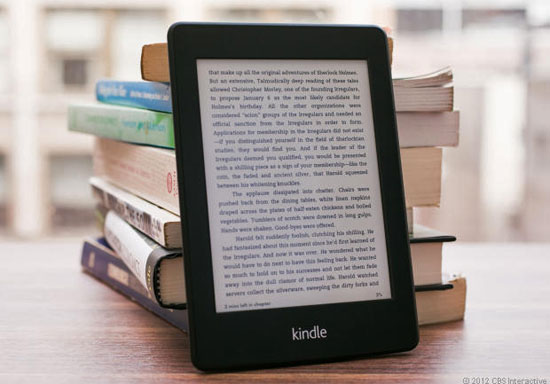Kindle-ing interest in reading
May 15, 2014
Before Los Angeles County Librarian Margaret Todd boards a plane, she often asks her staff to “surprise” her by uploading some titles to her Kindle. For Todd, relying on the expertise of librarians is like consulting staff recommendations at a bookstore before choosing her next read.
Some library users will soon have a chance for a similar experience when the county’s new eReader Pilot Program begins rolling out. Come June or July, hundreds of Kindle Paperwhite devices—complete with preloaded titles in a variety of genres—will be made available to patrons as easily as taking out any book on the shelves.
“We are trying to learn and grow with our customers,” says Migell Acosta, the library’s assistant director and spokesman. “It’s a way for us to test how our customers want to read their books.”
While numerous public libraries have adopted eBook lending programs for customer-owned devices, Los Angeles County libraries are joining a much shorter list of libraries nationwide that lend eReaders. In 2011, the Sacramento Public Library system became one of California’s earliest adopters of a large-scale eReader program, using the Nook device instead of the Kindle. Acosta says Los Angeles County chose the Kindles because of a tool that allows for easy loading of material and automatic loading of additional titles in the future.
Initially, 705 devices will be made available in 24 libraries throughout the county’s First and Fifth supervisorial districts. Later this summer, three libraries in Supervisor Zev Yaroslavsky’s Third District are expected to join the pilot program, with 190 devices distributed to the Topanga, San Fernando and Agoura Hills libraries.

L.A. County Librarian Margaret Todd says nearly 900 Kindles will be available at selected libraries.
According to librarian Todd, the cost of each is $250, including $80 for content. The devices are primarily being paid for with county funds, with some help from private donations.
Todd says the price is now competitive with the cost of stocking traditional books. “If a kid checks out seven of our books and loses them, they’d have to pay us more than what the Kindle is worth,” she says. The devices have no WiFi and are locked to prevent downloading titles directly from Amazon.
The library plans to treat the devices like traditional books, with two exceptions: They must be returned to the lending library and they cannot be put into book drops because of the potential for damage. Borrowers under 18 must have the same parental permission currently required for borrowing audio and video materials.
Each Kindle comes loaded with 100 public-domain titles selected by Amazon. In addition, each will include 10 to 15 genre titles in more than 30 categories that include biography/memoir, popular nonfiction, urban/street lit, romance and young teen fiction. The reading rosters also include entire book series because library visitors tend to want to borrow them all at once. These include the popular Diary of a Wimpy Kid, Game of Thrones and Lord of the Rings.
As with traditional books, Kindle titles are being selected by the county library’s collection development department, which chooses books for the whole district and are not tailored to any one neighborhood. In that way, collections can easily circulate from library to library, officials say.
To load the devices, library spokesman Acosta says the collections department must consider the Amazon’s eBook price for each title, which can vary like stock prices. “For example, there was a book that won a Pulitzer Prize and the price spiked from $9.99 to $25.99. If a book gets signed for a movie deal, then we see the price spike,” he says.
San Fernando Library manager Hilda Casas is excited about the new program. She says the Kindles will serve as additional available copies of popular books and can be adjusted to larger print for customers who need it.
But in the end, a book is a book, Casas says.
“Some people prefer paperbacks, some people prefer hard copies, some prefer an eReader,” she says. “We’re trying to make that option available.”
Posted 5/15/14













 405 bridge work causes a stink
405 bridge work causes a stink





